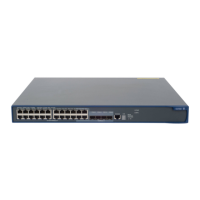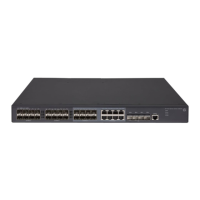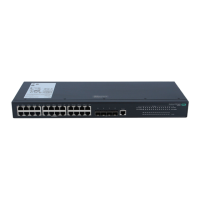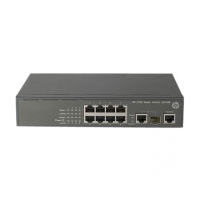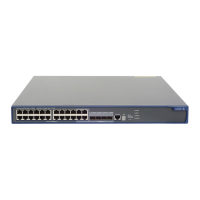302
Ste
Command Remarks
12. Set default
output
interfaces.
apply default-output-interface { interface-type
interface-number [ track
track-entry-number ] }&<1-n>
By default, no default output interface
is specified.
You can specify multiple default output
interfaces for backup or load sharing
by executing this command once or
multiple times.
You can specify up to m default output
interfaces for a node. The value of m
depends on the device model.
13. Enable load
sharing
among
multiple
default output
interfaces.
apply loadshare default-output-interface
By default, the default output interfaces
operate in primary/backup mode.
14. Match packets
against the
next node
upon match
failure on the
current node.
apply continue
By default, PBR does not match
packets against the next node upon
match failure on the current node.
This command takes effect only when
the match mode of the node is permit.
Configuring PBR
Configuring local PBR
Configure PBR by applying a policy locally. PBR uses the policy to guide the forwarding of locally
generated packets. The specified policy must already exist. Otherwise, the local PBR configuration fails.
You can apply only one policy locally. Before you apply a new policy, you must first remove the current
policy.
Do not configure local PBR unless required.
To configure local PBR:
Ste
Command
Remarks
1. Enter system view.
system-view N/A
2. Apply a policy locally.
ip local policy-based-route
policy-name
By default, no policy is locally
applied.
Configuring interface PBR
Configure PBR by applying a policy to an interface. PBR uses the policy to guide the forwarding of
packets received on the interface. The specified policy must already exist. Otherwise, the interface PBR
configuration fails.
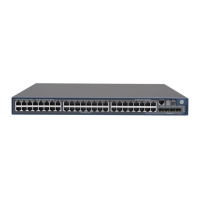
